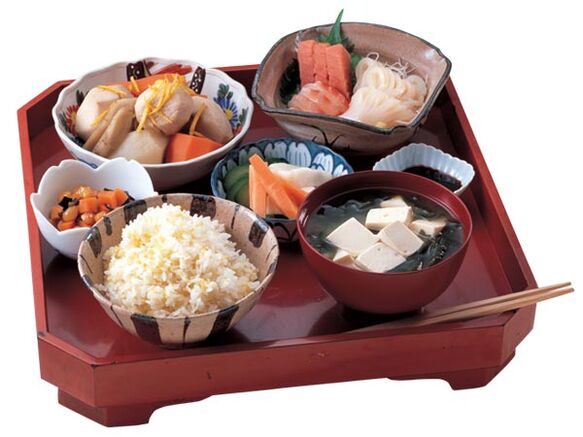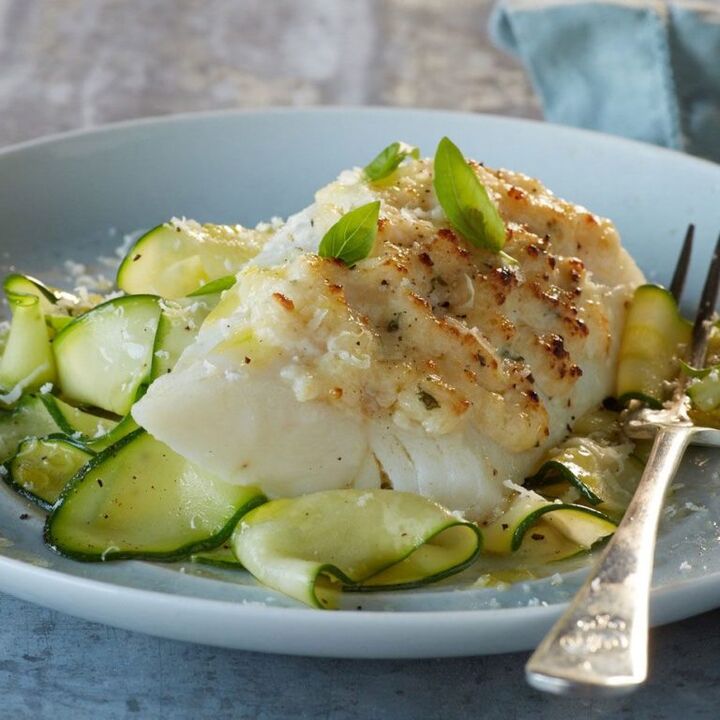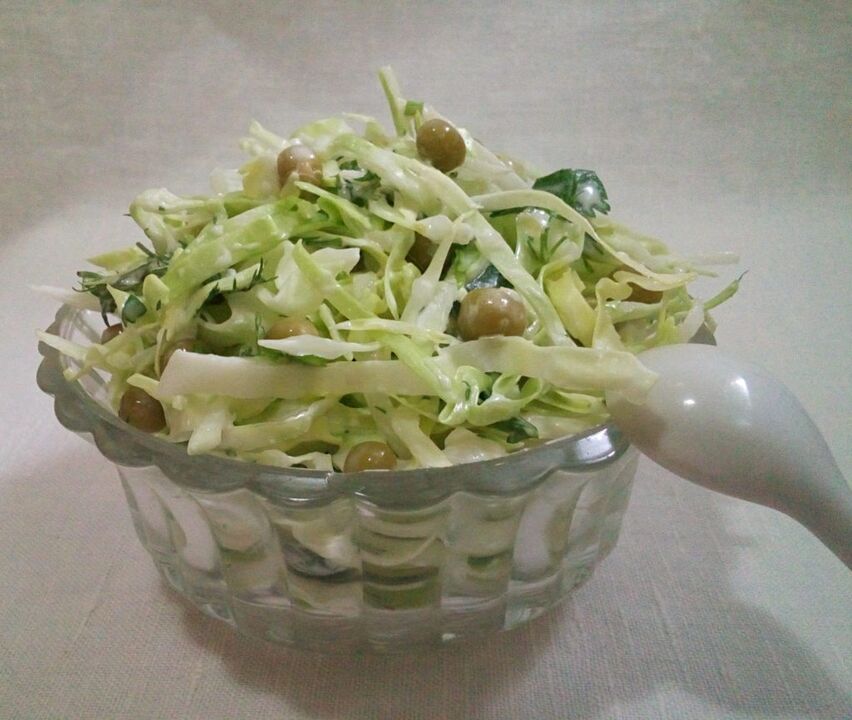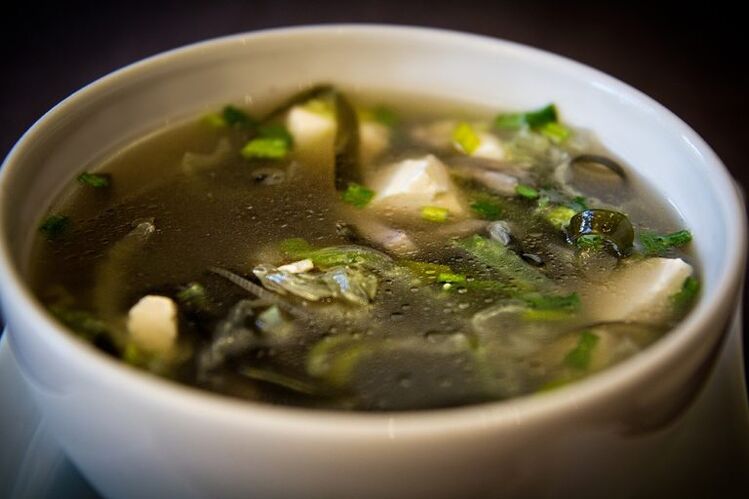
The Japanese diet for 14 days is one of the most popular weight loss schemes developed by the specialists of the Japanese clinic "Yaeks". It contains a specific list of products, has a simple menu and an effective and easy to follow methodology at home.
A strict daily diet requires compliance with several conditions: disciplined eating, avoiding prohibited foods and regularly drinking plenty of fluids.
The finished table can be printed and hung on the wall.
The Japanese diet lasts 14 days. The demand of the Japanese diet is explained by the quick results and the stable and lasting effect: in 2 weeks, with the right approach, you can get rid of 5 or more kilograms of excess weight.
What is the Japanese diet?
- Duration of the diet:14 days;
- Specificity:strict low calorie protein diet,
- The approximate cost of the diet:balance;
- Results of the Japanese diet:weight loss of 5-8 kg;
- Recommended frequency:no more than 2 times a year;
- The main advantage of the diet:preservation of the result for a long time (after proper exit from the diet).
Japanese diet for 14 days: what to expect?
Do not expect a special variety on the menu - all foods allowed in the Japanese diet for 14 days are well known to many. This is an undoubted advantage, since the risk of allergic reactions to exotic foods is minimal, and the recommended food for meals can be purchased in any supermarket, even the smallest.
It is not known exactly why this weight loss diet was called Japanese. According to one version, it was developed in a certain Tokyo clinic, according to another, the name was inspired by an easy, simple and clear dietary scheme, following which it gives a stimulating effect (similar to the Japanese way, right? the rules, do your best and you will receive a reward). . .
Furthermore, the Japanese 14-day diet, now widespread among those who are losing weight all over the world, is distinguished by the moderation both in the composition and in the caloric content of the recommended foods, and this also connects it with the traditional Japanese diet.
Japanese nutritionist Naomi Moriyama believes that the secret of her compatriots' youth and longevity lies in small portions and a diet that contains a small amount of carbohydrates.
Japanese diet rules
However, moderation, unfortunately, is unusual for many residents of our country and reducing the amount of calories can become a real problem. In addition, the Japanese diet for weight loss has very severe restrictions.
Protein
In addition, the main component that provides energy to the body in the Japanese diet is protein obtained from chicken eggs, poultry, lean meat, fish and dairy products. Carbohydrates can be obtained from some of the allowed vegetables, fats from vegetable oils allowed for cooking and salad dressing, as well as those found in meat and fish.
Cellulose
Vegetables and fruits are rich in fiber, the amount of which in some days of the Japanese diet is not particularly regulated, so the digestive tract will be able to fully cope with its work.
Beverages
Coffee and green tea invigorate and contain healthy antioxidants (therefore, it is better to give than high quality, natural tea and coffee, without artificial additives).
In any diet, a diet is very important and Japanese is no exception. Drink plenty of clean, room-temperature, non-carbonated water throughout the day to simultaneously help your stomach feel full and speed up the elimination of processed animal proteins from the body.
Japanese diet for 14 days - the principle of losing weight
The essence of the Japanese diet is expressed in a few words: low-calorie, protein, minimal amount of salt. As a result, thanks to these three main bases, the weight loss process is initiated:
- Proteins are able to increase the production of heat, which accelerates the metabolism, which promotes weight loss;
- Due to the restriction of salt in the diet, excess fluid is removed from the tissues, edema is eliminated, pressure is normalized;
- The body receives a small amount of calories. Therefore, it must activate its reserves;
- The body spends a lot of energy on the assimilation of protein products, which involves the burning of fats.
The diet is suitable for people of any weight category. If you need to lose 3-4 kg, it will be enough to follow a diet for 7 days. If you need to lose weight from 5 kg or more, you will need to follow the Japanese diet for 14 days.
In the absence of contraindications and excellent health, you can stretch it for a month, since, in addition to proteins, it still contains fats (vegetable oil) and carbohydrates (rice).

Japanese diet for 14 days, important points
The most effective diet for fast weight loss is the Japanese diet. OnlyDucan's diet, but they have a difference in duration: if the Japanese only lasts two weeks, thenDucan's dietit will drag on for months when all of its stages are completed.
Japanese diet for 14 days: the basics of dietary nutrition
The Japanese diet was developed about 16 years ago, during which time many people who want to lose weight have appreciated its effectiveness. The "Japanese" diet implies a salt-free diet with a significant reduction in carbohydrates.
A feature of the diet are three meals a day and plenty of fluids. This diet is suitable for people between the ages of 18 and 40 and has no gender, that is, the diet is suitable for both men and women.
The "Japanese" is based on reducing the daily calorie intake and avoiding carbohydrates, especially fast ones. Diet food means avoiding salty, fatty, smoked foods. During the diet, products such as alcohol, juices, soft drinks and any type of fast food are also contraindicated.
Strict adherence to these tips leads to an acceleration of metabolism, as a result of which excess body fat is burned and converted into energy. The Japanese diet belongs to the class of protein diets. Chicken eggs, rabbit and chicken meat, fish and some dairy products are taken as the basis of the diet.
Of the carbohydrates, it is permissible to consume only a few vegetables in small quantities. A prerequisite is the normalization of the water balance, in addition to the fact that those who are losing weight need to drink at least 2 liters of pure water, green tea, coffee or chicory should also be included in the menu.
The basic principles of proper nutrition:
- Individual choice of the Japanese diet:for 7 and 14 days. With a small amount of excess weight, it is enough to stick to the diet for 7 days. If you are overweight, it is better to follow the Japanese diet for 14 days, reviews show that in the first case the weight loss is about 6 kilograms, in the second - up to 10 kilograms;
- Strict adherence to the diet:the products offered cannot be replaced with other alternatives. You can only use tomato juice instead of a tomato, white cabbage instead of spinach;
- Strict Sugar Free:under a categorical ban, all refined carbohydrates, sweet foods, pastries and products based on flour, honey;
- Gradual entry and exit from the Japanese diet is required.The results are less noticeable in those who switch to this diet from another diet. And they are clearly visible if the preliminary meals were not dietary. With a full-fledged diet on the eve of the "Japanese woman", you should arrange a fasting day (kefir or apple) or at least have a light dinner (a little boiled brown rice with a fresh vegetable salad). When you go out, you should gradually introduce the products of daily use, about 1 per week;
- Mandatory absence of salt:the Japanese diet without salt is aimed at removing excess fluid from the body, due to which up to 30% of excess weight is lost;
- Prohibition of exceeding the deadlines.It is categorically impossible to continue diet food for more than 14 days due to the danger to the body;
- An adequate volume of fluid is required:during the day, you should drink 2 liters of plain water. Tea (green can be drunk) and coffee are not included in this volume;
- Strict adherence to the sequence:the Japanese diet, the menu of which was developed with the aim of gradual weight loss and long-term preservation of the result, does not tolerate changes in the proposed diet. Impossible to reorganize the places of the days and the menu of breakfasts, lunches, dinners.
Advantages and disadvantages of the Japanese 14-day diet
Pros of the Japanese diet:
- Reduces the risk of cardiovascular disease (also due to a decrease in salt in the diet);
- Long-lasting results with the right way out of the diet (that is, you will not regain the lost pounds);
- Availability of products prescribed in the menu - no exotic;
- Minimal salt intake reduces swelling;
- Protein products will not allow the skin to stretch and sag after losing weight;
- You can use different methods of cooking dishes: not only steam, stew or boil, but they can also be fried, without excluding vegetable oil from the diet;
- Plant food replenishes the body with the necessary vitamins and microelements;
- Significant weight loss.
Cons of the Japanese diet:
- Three meals a day without snacks do not correspond to the principles of healthy weight loss, when meals are fractional, up to 5-6 times a day;
- There are many contraindications;
- The frequency of application of the diet is only 1 time in 6 months;
- The small average daily calorie content of the diet is only 800 kcal, which is not enough for those accustomed to physical and mental activity;
- Dehydration of the body is possible;
- Every morning you need to start with a cup of black coffee on an empty stomach, which not all hearts and stomachs can handle;
- The wrong way out of the diet is fraught with rapid weight gain;
- The diet is not completely balanced, as there is a significant preponderance in the direction of proteins at the expense of carbohydrates and fats;
- Due to such a diet, at the end of the diet, many begin to experience dizziness, reduced performance, drowsiness and weakness are observed.
A small number of meals per day (only 3 instead of 5-6 healthy) and the absence of snacks may prove not easy for the Japanese diet, be prepared for this. It is advisable to have dinner at least 2 hours before bedtime and to start the day with a glass of water: this stimulates the metabolism and allows you to better tolerate the absence of breakfast.

List of basic points for the Japanese diet for 14 days
- Fresh chicken eggs - 2 dozen;
- Chicken fillet - 1 kg. ;
- Fresh carrots - 2-3 kg. ;
- Tomato juice - 1 liter;
- Quality coffee beans or ground - 1 pack;
- White cabbage - 2 medium-sized forks;
- Fruit (except bananas and grapes) - 1 kg. total;
- Selected lemons - 2 pcs. ;
- Sea fish fillet - 2 kg. ;
- Zucchini, eggplant - 1 kg. total;
- Kefir - 1 l. (buy fresh, do not store for future use! );
- Lean beef, pulp - 1 kg. ;
- Extra virgin olive oil - 500 ml. ;
- Your favorite green tea (no additives or flavorings) - 1 pack.
List of prohibited foods in the Japanese diet
In the Japanese diet, you shouldn't eat foods like:
- Alcohol and carbonated water;
- White flour based bakery products;
- Ready food and fast food;
- Confectionery;
- Salt;
- fatty meats and fish;
- Bananas, grapes, persimmons;
- Sugar;
- Starchy vegetables;
- Sauces, spices and other condiments;
- Treasure.
Japanese 14-day salt-free diet: list of allowed foods
Dishes based on fish or animal meat, with a side of vegetables, are very popular and many eat them every day. It is psychologically difficult for people to give up spices, especially salt, and various sweets in the form of baked goods, confectionery and sweets.
Forcing yourself to forget sweets and snacks for a week or two is a problem. It would be trainable, before starting a diet, many should cleanse their body and temporarily switch to proper salt-free nutrition.
Permitted products for losing weight on the "Japanese":
- Rusks of dark bread;
- Kefir or yogurt, preferably natural homemade;
- It is recommended to use homemade or purchased tomato juice with pulp. Ordinary packaged juice contains salt, which is prohibited;
- Hard, lean cheese;
- natural coffee;
- Sea fish, beef, chicken, boiled or steamed;
- Chicken or quail eggs, raw or hard-boiled (hard-boiled);
- Zucchini, aubergines, parsnip root fried in oil;
- Unsweetened fruit, most often apples, pears, citrus fruits;
- Green tea without additives or flavorings;
- Mineral or purified water without gas;
- Lemon, the juice of which can be added to dishes to improve their taste;
- Vegetable oil - unrefined olive or sunflower oil;
- Fruits: cherries, apples, kiwis, citrus fruits, pears, plums;
- Fresh vegetables: cabbage and carrots, raw and boiled. You can eat it whole, in pieces or chopped or grated.
Foods and spices that are not included in this list are considered prohibited. Fruits such as grapes and bananas are also prohibited.
From drinks, lemonades, juices, soda, alcohol of any strength are prohibited. A categorical taboo on various sauces, spices, marinades.
Japanese diet for 14 days: menu
The Japanese diet has a 14-day menu for every day and the scheme is currently popular. It attracts people with its low cost-effectiveness, while the duration of the diet is only 2 weeks.
A noticeable result after the expiration of the period, which persists after the correct interruption of the diet. Alas, to get through the two week diet, you will have to be patient, but it will be worth it.
1 day of Japanese diet
- Breakfast:coffee without sugar and milk.
- Dinner:2 boiled eggs, boiled cabbage with vegetable oil and a glass of tomato juice.
- Dinner:200 g of boiled or fried fish.
Day 2 of the Japanese diet
- Breakfast:a slice of rye bread and unsweetened coffee.
- Dinner:200 g of boiled or fried fish with boiled cabbage and vegetable oil.
- Dinner:100 g of boiled beef and a glass of kefir.
Day 3 of the Japanese diet
- Breakfast:a slice of rye bread, dried in a toaster, or an unleavened biscuit without additives, coffee without sugar.
- Dinner:zucchini or eggplant, fried in vegetable oil, in any quantity.
- Dinner:200 g of unsalted boiled beef, raw cabbage in vegetable oil and 2 hard-boiled eggs.
Day 4 of the Japanese diet
- Breakfast:a small fresh carrot with the juice of one lemon.
- Dinner:200 g of boiled or fried fish and a glass of tomato juice.
- Dinner:200 g of any fruit.
Day 5 Japanese diet
- Breakfast:a small fresh carrot with the juice of one lemon.
- Dinner:boiled fish and a glass of tomato juice.
- Dinner:200 g of any fruit.
6 day Japanese diet
- Breakfast:coffee without sugar.
- Dinner:unsalted boiled chicken 500 g with fresh cabbage salad and carrots in vegetable oil.
- Dinner:small fresh carrots and 2 hard-boiled eggs.
Japanese 7 day diet
- Breakfast:green tea.
- Dinner:200 g of unsalted cooked beef.
- Dinner:200 g of fruit or 200 g of boiled or fried fish or 2 eggs with fresh carrots in vegetable oil or boiled beef and 1 glass of kefir.
Japanese 8 day diet
- Breakfast:coffee without sugar.
- Dinner:500 g of unsalted boiled chicken and a salad of carrots and cabbage in vegetable oil.
- Dinner:small fresh carrots with vegetable oil and 2 hard-boiled eggs.
Day 9 Japanese diet
- Breakfast:medium carrot with lemon juice.
- Dinner:200 g of boiled or fried fish and a glass of tomato juice.
- Dinner:200 g of any fruit.
Japanese 10 day diet
- Breakfast:coffee without sugar.
- Dinner:50 g of cheese, 3 small carrots in vegetable oil and 1 hard-boiled egg.
- Dinner:200 g of any fruit.
11 day Japanese diet
- Breakfast:unsweetened coffee and a slice of rye bread.
- Dinner:zucchini or eggplant, fried in vegetable oil, in any quantity.
- Dinner:200 g of boiled beef without salt, 2 hard-boiled eggs and fresh cabbage in vegetable oil.
Japanese 12-day diet
- Breakfast:unsweetened coffee and a slice of rye bread.
- Dinner:200 g of boiled or fried fish with fresh cabbage in vegetable oil.
- Dinner:100 g of unsalted boiled beef and a glass of kefir.
Japanese 13 day diet
- Breakfast:coffee without sugar.
- Dinner:2 boiled eggs, boiled cabbage in vegetable oil and a glass of tomato juice.
- Dinner:200 g of boiled or fried fish in vegetable oil.
Japanese 14 day diet
- Breakfast:coffee without sugar.
- Dinner:200 g boiled or fried fish, fresh cabbage with olive oil.
- Dinner:200 g of boiled beef, a glass of kefir.
Get out of the Japanese diet
The first week of exiting the Japanese diet is a very crucial time. At this time, the body continues to lose weight and adapt to new conditions, so it is important not to pounce on food, but slowly introduce familiar foods into the diet. They must be exclusively natural.
In order for the result obtained to take hold, you should gradually abandon the diet. The exit period should be double.
Hence, the 14-day exit period from the Japanese diet should last at least 28 days, or 4 weeks:
- Eat fractionally (5-6 times a day);
- For breakfast, eat porridge cooked in water (buckwheat, oatmeal, rice) and omelettes. Your serving should be around 200g;
- Replace a fruit-based dinner with a full meal of vegetables and proteins (for example, 200 g of vegetable stew and steamed chicken cutlet);
- Salt should be added gradually to food: at the beginning of the exit, consume no more than 5 g of salt per day;
- Do not reduce the amount of protein foods;
- During the day, you need to make 2-3 snacks with fermented milk and fruit products;
- In the first week, gradually increase the consumed portions of meat and fish dishes - by 50 g, vegetables - by 100 g.
Approximate menu to get out of the Japanese diet for 2 weeks
Day 1-3 exit from the Japanese diet
- Breakfast:omelette from 2 eggs and 150 ml. milk (2. 5% fat), 1 loaf, black coffee.
- Dinner:200 g of boiled beef or 200 g of baked cod, 100 g of fresh vegetables.
- Dinner:100 g of cottage cheese (5% fat) or 250 ml. kefir (2. 5% fat) and 1 apple.
Day 4-6 exit from the Japanese diet
- Breakfast:200 g of oatmeal in water (sugar-free and oil-free).
- Snack:1 orange, 1 kiwi.
- Dinner:200 g of baked chicken breast, 100 g of fresh vegetables (cabbage, carrots, peppers).
- Dinner:200 g of boiled shrimp or 150 g of cottage cheese (7% fat), 1 cucumber.
Day 7-10 Exit from the Japanese diet
- Breakfast:200 g of oat flakes in water without sugar and butter, 2 rusks (20 g each).
- Snack:1 any fruit.
- Dinner:200 g of vegetable puree, 100 g of boiled beef.
- Snack:100 g of natural yogurt.
- Dinner:200 g of baked chicken breast, 150 g of any steamed vegetables.
Day 11-14 out of the Japanese diet
- Breakfast:200 g of any porridge with nuts, dried fruits and honey (no more than 1 tsp), 2 toasts (20 g each).
- Snack:1 any fruit, 100 g of natural yogurt or cottage cheese (5% fat).
- Dinner:200 g of any soup in lean chicken broth, 150 g of boiled chicken breast, 2 fresh cucumbers.
- Snack:1 any fruit or 150 g of natural yogurt.
- Dinner:200 g of boiled mussels, 150 g of vegetable stew;
- Snack:200ml. kefir (2, 5% fat).
Delicious Japanese diet recipes
To make the diet as simple as possible, we suggest you use these recipes for simple and tasty dishes that will allow you to endure this slimming marathon to the bitter end. Do not forget that the salt must be completely abandoned.

Recipe 1. Baked fish
This dish is suitable for any diet.
Ingrediants:
- Cod fillet - 300 g;
- Zucchini - 100 g. ;
- Soy sauce - 50 ml.
How to cook:
- Cut the fillets into fairly large chunks;
- Marinate in sauce for 3 hours;
- Cut the courgettes into slices. Leave for half an hour, drain the juice;
- Put the fish in the sleeve, on top - zucchini;
- Pour over the remaining marinade;
- Tie the sleeve, make several punctures;
- Bake for half an hour in a preheated oven at 180 ° C. Ready!

Recipe 2. Boiled cabbage salad
This salad is a staple in the Japanese diet.
Ingrediants:
- White cabbage - 200 g;
- Canned peas - 30 g;
- Vegetable oil - 30 ml. ;
- Parsley - to taste;
- Dill to taste.
How to cook:
- Boil the cabbage leaves until soft (30 minutes);
- refrigerate them;
- Cut into strips;
- Add the butter, peas and chopped herbs. Ready!

Recipe 3. Diet soup
The soup recipe is perfect for salt-free or rice-free options.
Ingrediants:
- Pollock fillet - 300 g;
- Water - 1, 5 l. ;
- Egg - 1 pc. ;
- Onion - 1 pc. ;
- Sea cabbage - 150 g;
- Soy sauce - 50 ml. ;
- Rice - 100 g.
How to cook:
- Chop the onion, marinate in the sauce for 3 hours;
- Boil the rice until half cooked, add the fish cut into pieces, cook until tender;
- Chop the seaweed, add them to the soup;
- Put the pickled onions in the same place, but without the marinade;
- Slowly pour the scrambled egg into the soup slowly, stirring constantly;
- Immediately remove from the heat;
- It can be served both cold and hot. Ready!
The Japanese diet allows for frying food as a cooking method, but we have selected these recipes, as steaming, boiling and stewing will contribute to even faster weight loss.
Japanese dinner. In the evening, the Japanese can eat dishes such as rice with furikake (dried mix), seaweed, red fish, miso soup, salad, steamed vegetables, green tea.
Japanese diet: contraindications
The Japanese method is designed for people without health problems. In the presence of serious diseases, it is better to abandon a strict diet.
The Japanese diet is contraindicated in pregnancy and breastfeeding, as well as in people with chronic diseases such as gastritis, stomach ulcer, liver disease, kidney disease and heart disease. It is advisable to consult a specialist before starting a diet meal.
The main contraindications are:
- Inflammatory processes;
- Diseases of the gastrointestinal tract (gastritis, ulcer);
- feeding time;
- Kidney failure;
- cholecystitis;
- Viral infection;
- Hepatitis;
- cholelithiasis;
- Increased emotional, mental, physical stress;
- HIV and AIDS;
- Hypertension;
- Chronic diseases;
- Neuralgia;
- Diabetes;
- Climax;
- Age under 18 and over 55;
- Obesity.
The Japanese weight loss diet is recommended for healthy people to correct their shape and shed a few extra pounds. Obese people require a thorough examination under the supervision of a specialist and a special diet. It is strictly forbidden to go on diets and make radical changes in nutrition alone for people with obesity. Possible negative consequences: metabolic disorders, sharp increase in body weight. Any diet for obese patients is prescribed only by the attending physician.
If side effects such as dizziness, rapid heartbeat, stomach pain, dry lips and skin begin to appear, this may indicate dehydration and impaired functioning. You should stop the diet and make sure you visit a doctor to avoid complications.
Should you follow the Japanese diet? Everyone will have to answer this question independently. Rave reviews on the Internet can prompt you to make a decision, but do not forget about the individual characteristics of the body. People with chronic illnesses should be treated with caution.
Do not forget during a diet, you need to listen carefully to your body.
Rapid weight loss and the ability to maintain weight subsequently require a whole series of measures that require motivation, rigorous discipline and constant adherence to the correct regimen. Be slim and healthy!














































































